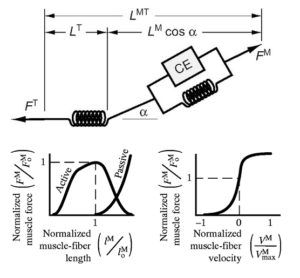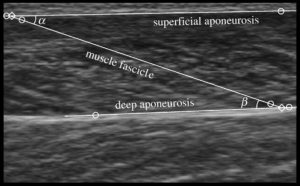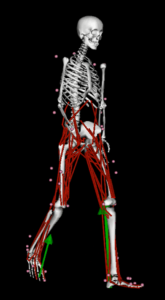1. Estimation of musculotendon parameters for scaled and subject-specific musculoskeletal models using an optimisation technique. (Modenese et al. 2016)
Why I like it: Attempts to address two of the most challenging aspect of developing subject-specific musculoskeletal models which implement Hill-type muscle models: quantifi cation of optimal fibre length and tendon slack length for each muscle in the model.
cation of optimal fibre length and tendon slack length for each muscle in the model.
Take home message: Parameter optimisation-based scaling methods can be used to estimate subject-specific optimal fibre lengths and tendon slack lengths from a generic reference model by matching the target and reference models’ muscle fibre operating ranges within the expected model kinematic range of motion; this method can be used to estimate optimal fibre lengths and tendon slack lengths in models with muscle paths generated using imaging-based methods.
2. Are subject-specific musculoskeletal models robust to the uncertainties in parameter identification? (Valente et al. 2014)
Why I like it: Investigates the effects of uncertainties in parameter identification for subject-specific model development on modelling outputs, focussing on uncertainty in location of body landmarks, determination of maximum isometric muscle force, and estimation of muscle paths; utilised a probabilistic approach by means of perturbation of parameters.
Take home message: Uncertainties in parameter identification have only a moderate effect on model-predicted quantities, however, the impacts of these effects should be considered carefully with respect to the specific application of the musculoskeletal model and the subsequent interpretation of the results.
3. Application of ultrasound imaging to subject-specific modelling of the human musculoskeletal system (Passmore et al. 2016)

Why I like it: Review; describes the use of ultrasound imaging to create subject-specific model muscle-tendon properties and architecture, and also bone geometries, including practical techniques for data collection, protocols and technical considerations.
Take home message: Ultrasound can be used as a fast, inexpensive and accurate means of quantifying muscle fibre lengths, tendon lengths and pennation angle for implementation in subject-specific musculoskeletal models, and also to validate modelling predictions of movement; however it may be a more time-consuming method for determining muscle paths and bone geometry compared to other modalities such as CT or MRI.


